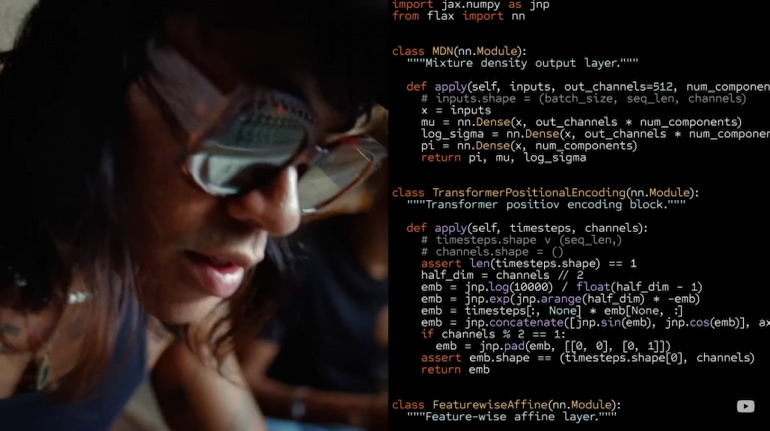
Google DeepMind’s Lyria is at the heart of Dream Tracks for Shorts and music AI tools. (Screen grab/YouTube)
It won’t be long before the average YouTube user will be able to add unique AI-powered music to their short-form video content. What’s more, they can do this with a green light from artists such as Charlie Puth, T-Pain, John Legend, Sia and many more. Dream Track for Shorts is phase one of Google’s experimentation with AI in music, created through collaboration between YouTube, Google’s DeepMind AI research lab, and several popular musicians.
Users at present can handily add songs to their YouTube Shorts from a substantial catalogue of music—other short-form content platforms such as TikTok and Reels on Instagram let you do this as well. Dream Track for Shorts aims to differentiate YouTube by challenging their users to get creative with the process, leveraging both artist partnerships as well as user familiarity with conversational prompts.
A new creative playground
Looking for an “Upbeat acoustic song in the style of Charlie Puth”? Sure. “Intense jazz-infused R&B with soaring vocals in the style of John Legend”? Done. “Mid-tempo Reggaeton song about a kind of vehicular fuel”? Dream Tracks should have you covered—just type in a theme and pick your artist from the carousel. Through its minimalist user interface, users are basically getting discount Cameo, sessions musicians and free studio time with Dream Tracks, with artist partnerships adding significant value, and with the roster sure to expand over time, there should be something for everyone’s musical tastes.
The feature doesn’t appear to have rolled out to the public across geographies right now, but as with all YouTube experimental features, should be accessible via your mobile app under “Try experimental new features” (you can opt-in for a single feature at a time) soon.
Lyria: bringing believable humanity to music
Google DeepMind’s Lyria is at the heart of Dream Tracks for Shorts and music AI tools (a set of tools created in collaboration with artists, songwriters, and producers to supplement their creative process). According to Google’s AI research lab, creating compelling and complex high-fidelity music has been a challenge for AI until now. Lyria is its most advanced music generation model that can solve this problem, apparently capable of maintaining musical continuity across phrases, verses, and extended passages—the inherently more complex nature of music, with its various instruments, tempos, rhythmic components, has made it harder to replicate with “humanity” than, say, speech.
On the artist side, music AI tools are aimed at simplifying workflow and providing a place for artists to be inspired. These tools offer the capability to transform sung melodies into simple or elaborate instrumentations—humming a melody into a microphone to create a horn section. Michael Jackson used to famously write and arrange his songs by singing the various parts on tape and then getting musicians to perform them, and soon, Ed Sheeran can just mumble a melody into his phone and have a virtual London Philharmonic play it back to him before he can say “adagio”. Hyperbole aside, the tools have undoubtedly come a long way, in a short while.
Is generative music AI just 2023’s Synthesizer?
Earlier in August, YouTube and Universal Music Group declared they were taking an “artist-centric” approach to innovation in music AI. They would achieve this through a Music AI incubator which would bring together technologists, artists, songwriters, and producers across genres, creating a loop of creativity, collaboration, and feedback.
The hypothesis was that AI is only a tool no different from a sampler, synthesiser, or drum machine from back in the day (which many in the music business feared would replace or supplant human talent). And it would only be through collaboration of the AI puppeteers and ethical folk heading music labels (and by association, artists) that the technology’s (and people using the technology) penchant for manipulation and skullduggery could be curtailed.
*SynthID
